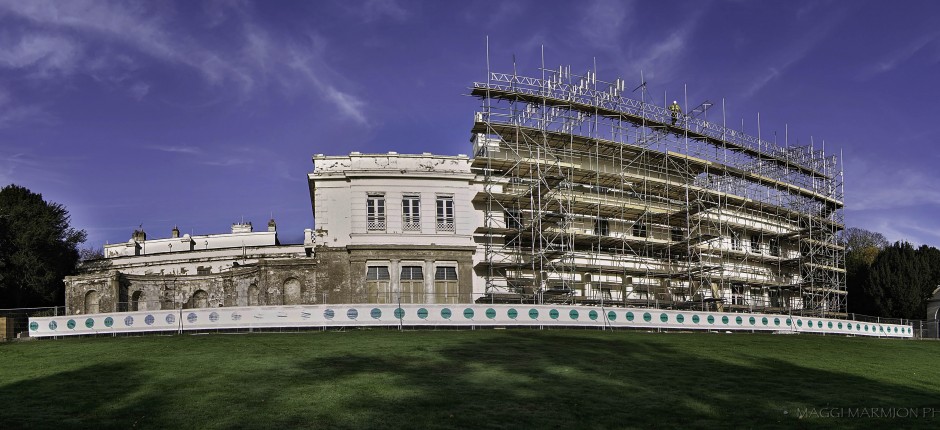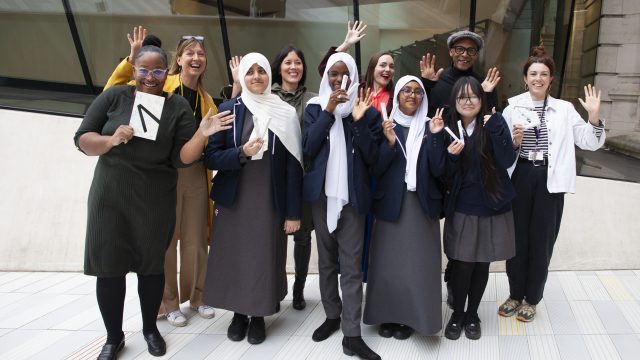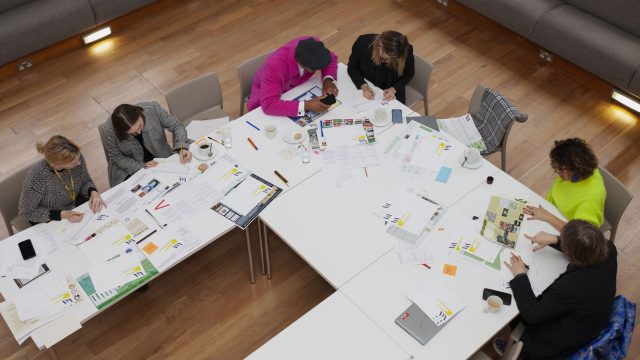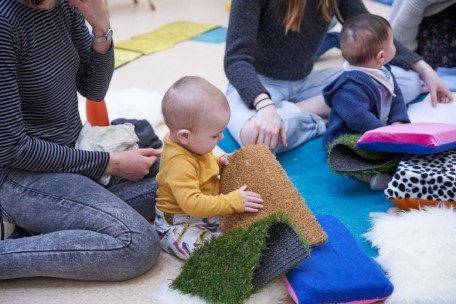This is a guest post by Lisa D’Agostino, Formal Learning Officer at Gunnersbury Museum and Park Development. Gunnersbury is part of the Chiswick Hub, working with the school and Watermans Arts Centre on the Peter Brook Schools Outreach Project.
Gunnersbury’s learning service has a long tradition of using drama to help audiences engage and connect with history and heritage, so we are excited to work with our project partners – a group of young actors from Chiswick School, Watermans Art Centre, and Danielle McIlven, Project Director for the Chiswick Hub.
We were also rather daunted! Gunnersbury is undergoing a major Heritage Lottery Fund restoration, renovating the museum and making major improvements to the park, so the museum is closed until 2017, and some 40,000 objects have been decanted offsite. Our learning service continues in the Small Mansion, adjacent to the museum in Gunnersbury Park, but nevertheless it is basically a muddy building site with limited access to museum collections. How could we create an engaging and inspiring visit for the actors and contribute meaningfully to the project?

Arguably, museums have become increasingly “theatrical” spaces, employing interpretive strategies such as costumed historical characters, and “moment-in-time” installations – where historical scenes are recreated as though characters appear to have just left the room, so remaining objects become actors, providing clues to the interrupted drama taking place.
We decided that introducing “object actors” might be an interesting way of complementing the group’s work, ultimately exploring the idea that objects can be actors in their own right, with their own biographies and stories. Using museum collections we explored how we make meaning from objects, how curators can direct audiences to respond to objects differently according to how they are presented, and how objects themselves can have “agency” – the power to influence our thoughts and actions. In Lord of the Flies, the conch is an example; it’s only a shell, but the meaning that the boys create for it transforms it into a powerful weapon that can liberate or oppress.
The group were very receptive and used improvisations to explore some of these ideas. It will be fascinating to see how this might inspire their creative work. The group also looked at potential performance spaces. It’s not a traditional theatre space, but the group were very positive; the maze of rooms and corridors could influence the development of their work, giving them the freedom to create the world of their play.
This project is a great opportunity to build relationships, to discover new and innovative ways of reinterpreting our collections and to consider how we might share these concepts with other organisations in future.


